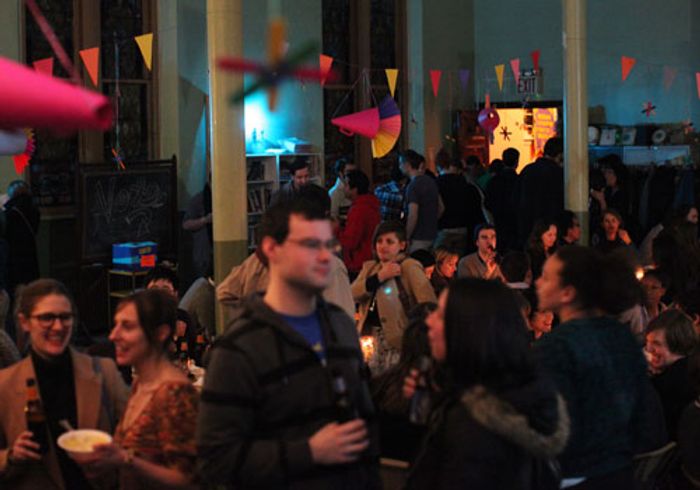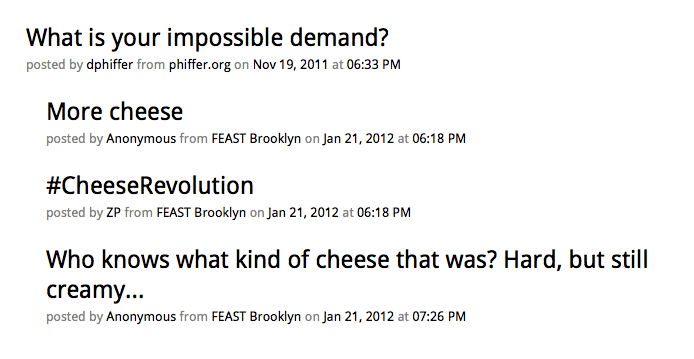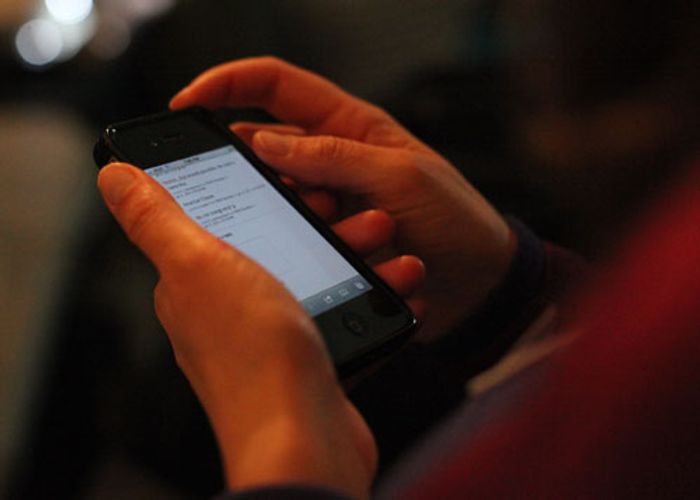The recent absence of regular posting here has mainly been due to project overload on my part. For the last week I’ve been focusing on my activist wifi project, Occupy.here. On Saturday I participated in FEAST Brooklyn, a kind of science fair exposition for community art projects. The way it works is everyone who attends pays $20 for a banquet dinner and a vote for which project of ten should be funded. I did not receive funding, but I got a lot of great feedback and my first round of user testing with about a dozen people trying the project out.
I was satisfied to see the technology performing flawlessly. As far as I know, everyone who tried to was able to join the wifi network and participate in the online forum. I still consider myself a newbie to wifi hacking and programming in Lua, but I’ve mustered enough stability to start paying more attention to interaction design and social dynamics. Seeing how people used the software in practice was really interesting. It seems obvious in retrospect, but presenting an anonymous message forum to such a festive audience yielded an uncomplicated gregarious kind of conversation.

While the forum’s conversation didn’t cover politics or the Occupy movement, the invisible backchannel aspect of it was compelling. The first, most active, message thread was about the food at the event. Apparently the cheese was a big hit, although sadly I wasn’t able to try it myself. This thread included the forum’s first hash tag, #CheeseRevolution, and a long string of emoji burgers. In another thread an attendee complained they’d come to the event without a date, boldly listing a phone number that presumably belongs to the lonely author. I was amused to see the AOL-era “ASL” (age/sex/location) inquiry and “Anyone got any weed?” It was silly and fun, and felt entirely appropriate to the event.

How the discussion is framed in a broader social context is very important. In the deployment at FEAST, users were offered an open architecture without many cues about which topics of conversation the forum is meant to support. The next iteration will feature a more prominent introduction to the Occupy.here platform and host an archive of essays and media about the Occupy movement from a variety of sources.
I’m interested to see what effect, if any, these changes have on the subject and character of conversations. I wonder if deemphasizing the message forum might preclude conversation altogether, favoring a passive mode of media consumption. I’ll gather some usage data to see how many users browse without participating.

Users identified themselves about 50% of the time, half posting under the default handle “Anonymous” and half adopting first names or two letter initials. For my next round of testing I’m going to adjust the interface where users select their usernames, perhaps not offering a default option. I’m still committed to supporting anonymity, despite the challenges it creates in reaching higher level discussions. I do think it’s possible and perhaps making all users uniquely identifiable might contribute toward discussions with slightly more substance.
Probably the most important factor for user behavior is the physical (and social) context the wifi router appears in. This coming Saturday I’ll be showing Occupy.here at the Activist Technology Demo Day event at Eyebeam. I’m guessing the audience will be more oriented toward technology and activism. The location of the venue, in Chelsea rather than Greenpoint, will also have some bearing on the next round of users. That’s a lot of variables changing at once, but I’ll be sure to post my decidedly non-scientific findings next week.